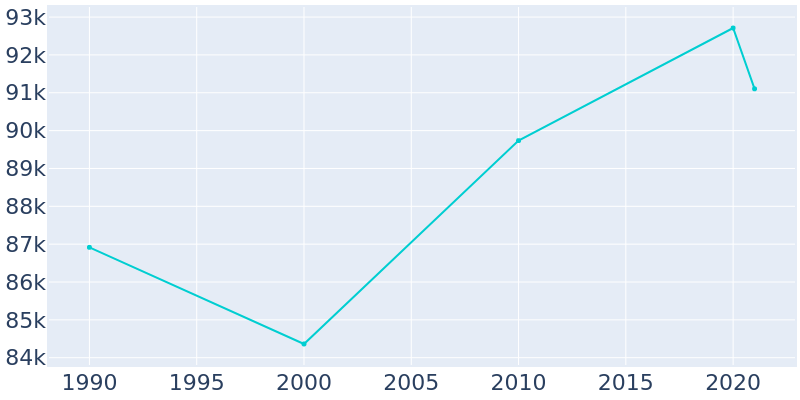Santa Monica Population – Santa Monica, a picturesque coastal city in California, boasts a population as diverse as its stunning beachfront landscape. With approximately 92,000 residents, this vibrant community combines the charm of a beach town with the sophistication of a cultural hub, making it a unique and desirable place to call home.
Related Post –
- Carlsbad NM Population
- Glendale Population
- San Diego Population
- San Jose Population
- Fresno Population
Santa Monica Population
Santa Monica is a coastal city in Los Angeles County, California, United States. It is situated along Santa Monica Bay, on the southern edge of the Santa Monica Mountains. Santa Monica is a popular tourist destination, known for its beaches, Third Street Promenade, and Santa Monica Pier. The city has a diverse economy, with a mix of tourism, technology, media, and entertainment industries.
Santa Monica is one of the most densely populated cities in the United States, with a population of over 93,000 people per square mile. The city’s population has been growing steadily in recent years, and it is expected to continue to grow in the future.
Population of Santa Monica
According to the U.S. Census Bureau, the population of Santa Monica in 2020 was 92,711. This represents a 1.2% increase from the 2010 census. The city’s population is expected to reach 100,000 by 2030.
Santa Monica is a diverse city, with a population that is 52% white, 11% Asian, 10% Hispanic or Latino, 7% black or African American, and 20% other. The city’s median age is 40.2 years old.
Population Trends in Santa Monica
Santa Monica’s population has been growing steadily in recent years. The city’s population grew by 1.2% between 2010 and 2020, and it is expected to grow by another 1.2% per year over the next decade.
The city’s population growth is being driven by a number of factors, including:
- In-migration: Santa Monica is a desirable place to live, and people are moving to the city from other parts of the country and the world.
- Natural increase: The number of births in Santa Monica is exceeding the number of deaths.
- Development: Santa Monica is a dense city, and there is limited land available for development. However, the city is developing new housing units, which will help to accommodate the growing population.
Challenges and Opportunities of Population Growth
Population growth presents both challenges and opportunities for Santa Monica.
Challenges include:
- Housing affordability: Santa Monica is one of the most expensive places to live in the United States. The city is working to increase the supply of affordable housing, but it is a challenge to keep up with the demand.
- Traffic congestion: Santa Monica is a popular tourist destination, and it can be difficult to get around the city during peak hours. The city is working to improve public transportation and reduce traffic congestion.
- Environmental impact: Population growth can put a strain on the environment. Santa Monica is working to reduce its environmental impact by promoting sustainable development and renewable energy.
Opportunities include:
- Economic growth: Population growth can lead to economic growth. The city is working to attract new businesses and create jobs.
- Diversity: Santa Monica is a diverse city, and its population is continuing to diversify. This diversity is a strength for the city, and it can help to attract new businesses and residents.
- Cultural vitality: Santa Monica is a vibrant cultural community. The city’s population growth is helping to support its cultural institutions and events.
Santa Monica’s Population Density
Santa Monica is one of the most densely populated cities in the United States, with a population density of over 93,000 people per square mile. This means that there are more people living in a smaller area than in most other cities in the country.
Santa Monica’s Median Age
The median age in Santa Monica is 40.2 years old. This means that half of the city’s population is younger than 40.2 years old, and the other half is older. Santa Monica is a relatively young city, with a median age that is lower than the median age of California and the United States as a whole.
Santa Monica is a growing city, and its population is expected to continue to grow in the future. The city is facing some challenges as a result of population growth, such as housing affordability, traffic congestion, and environmental impact. However, the city is also working to capitalize on the opportunities of population growth, such as economic growth, diversity, and cultural vitality.


